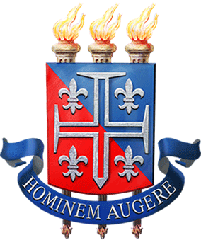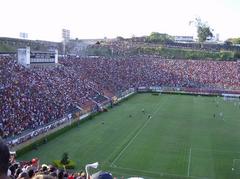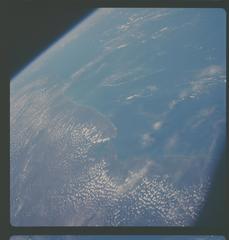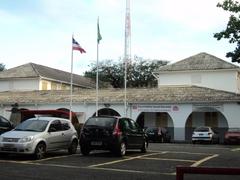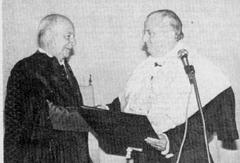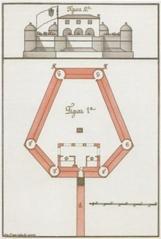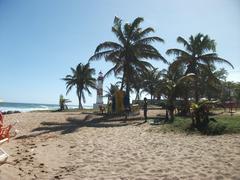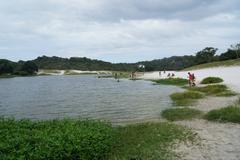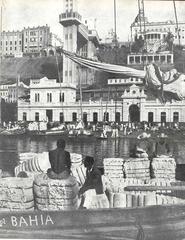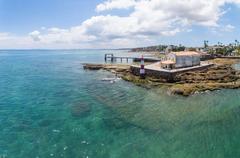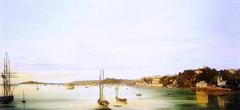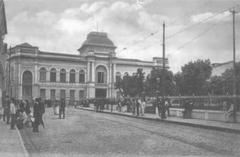Visiting Forte de São Pedro: History, Tickets, and Tips
Date: 19/07/2024
Introduction
Table of Contents
- [Historical Background](#historical-backgroundhistorical-background)
- [Early Years and Dutch Incursions](#early-years-and-dutch-incursionsearly-years-and-dutch-incursions)
- [Expansion and Modernization](#expansion-and-modernizationexpansion-and-modernization)
- [A Shift in Role - From Defense to Administration](#a-shift-in-role---from-defense-to-administrationa-shift-in-role---from-defense-to-administration)
- [Decline and Restoration](#decline-and-restorationdecline-and-restoration)
- [Forte de São Pedro Today](#forte-de-são-pedro-todayforte-de-são-pedro-today)
- [Visitor Information](#visitor-informationvisitor-information)
- [Tickets and Opening Hours](#tickets-and-opening-hourstickets-and-opening-hours)
- [Accessibility](#accessibilityaccessibility)
- [Travel Tips](#travel-tipstravel-tips)
- [Nearby Attractions](#nearby-attractionsnearby-attractions)
- [FAQ](#faqfaq)
- [Conclusion](#conclusionconclusion)
- [Call to Action](#call-to-actioncall-to-action)
- [References](#referencesreferences)
Historical Background
Forte de São Pedro, located in the heart of Salvador, Brazil, boasts a rich history intertwined with the city’s colonial past and strategic importance. Its story is one of defense, power struggles, and resilience, reflecting the broader narrative of Brazil’s colonial era.
Early Years and Dutch Incursions
The fort’s origins can be traced back to the late 16th century, a period when Salvador, then the capital of colonial Brazil, faced increasing threats from European rivals. The Portuguese, eager to protect their valuable sugarcane plantations and trade routes, recognized the need for robust coastal defenses. In 1583, under the orders of Governor General Diogo Teles de Meneses, construction began on a fortification at the mouth of the Patos River. This initial structure, a modest earth and timber bulwark, served as a precursor to the imposing stone fortress that stands today.
The fort’s strategic location, overlooking the Bay of All Saints, proved crucial in repelling several Dutch incursions throughout the 17th century. The Dutch, vying for control of Brazil’s lucrative sugar trade, launched ambitious attacks on Salvador. In 1624, a powerful Dutch fleet captured the city, but their hold was short-lived. The following year, a combined Portuguese and Spanish force retook Salvador, marking a significant victory for the Portuguese crown.
Expansion and Modernization
Following the Dutch threat, the Portuguese embarked on a comprehensive program to strengthen Salvador’s defenses. Forte de São Pedro underwent significant expansion and modernization during this period. Under the governorship of D. Fernando Mascarenhas, renowned military engineer Francisco de Frias was commissioned to enhance the fort’s fortifications.
Frias’s design transformed Forte de São Pedro into a formidable bastion, incorporating the latest military architectural advancements. He reinforced the existing structure with sturdy stone walls, added bastions and ramparts, and strategically positioned cannons to maximize firepower. The fort’s layout, typical of 17th-century military architecture, reflected the principles of the Dutch school of fortification, emphasizing low, angled walls to deflect cannon fire.
A Shift in Role - From Defense to Administration
As the 18th century progressed and the threat of foreign invasion receded, Forte de São Pedro’s role gradually shifted from active defense to administrative and military functions. The fort housed barracks for soldiers, a gunpowder magazine, and administrative offices. It also served as a prison for a time, holding both common criminals and political prisoners.
During this period, the fort witnessed significant historical events, including the rise of Brazilian nationalism and the struggle for independence from Portugal. In 1822, Brazil declared its independence, and Forte de São Pedro, along with other fortifications in Salvador, played a role in securing the newly independent nation’s sovereignty.
Decline and Restoration
The 19th century saw a decline in the fort’s military significance. With the advent of more advanced weaponry and changing military strategies, coastal fortifications like Forte de São Pedro became increasingly obsolete. The fort fell into disrepair, its once-imposing walls crumbling under the weight of time and neglect.
However, the 20th century brought renewed interest in preserving Brazil’s historical heritage. Recognizing the fort’s historical and architectural significance, the Brazilian government designated Forte de São Pedro as a national monument in 1938. This designation paved the way for restoration efforts aimed at preserving the fort for future generations.
Forte de São Pedro Today
Today, Forte de São Pedro stands as a testament to Salvador’s rich history and architectural legacy. Meticulously restored to its former glory, the fort offers visitors a glimpse into the city’s colonial past. Its sturdy walls, imposing cannons, and strategic location provide a tangible connection to a bygone era of maritime power struggles and colonial expansion.
Beyond its historical significance, Forte de São Pedro has evolved into a vibrant cultural space. The fort houses the Museu de Arte Moderna da Bahia (MAM-BA), one of Brazil’s most important modern and contemporary art museums. The museum’s collection, housed within the fort’s historic walls, creates a unique dialogue between art and history, offering visitors a multifaceted cultural experience.
Forte de São Pedro also hosts a variety of cultural events, including concerts, theatrical performances, and exhibitions. Its picturesque setting, overlooking the Bay of All Saints, provides a stunning backdrop for these events, further enhancing their appeal.
Visiting Forte de São Pedro is not merely a journey through time; it’s an immersion into the heart of Salvador’s cultural and historical tapestry. The fort’s well-preserved architecture, its stories of defense and resilience, and its vibrant cultural offerings make it a must-visit destination for anyone seeking to understand the soul of this captivating Brazilian city.
Visitor Information
Tickets and Opening Hours
Forte de São Pedro is open daily from 9:00 AM to 5:00 PM. Tickets can be purchased at the entrance or online. General admission is $5, while students and seniors enjoy discounted rates.
Accessibility
The fort is accessible to visitors with disabilities, offering ramps and accessible restrooms. Guided tours are available in multiple languages.
Travel Tips
- Plan Your Visit Early: Visit early in the morning or late afternoon to avoid crowds and enjoy the best photo opportunities.
- Bring Sun Protection: Bring a hat and sunscreen as the fort’s exposed areas can get quite sunny.
- Wear Comfortable Footwear: The fort has uneven surfaces, so comfortable footwear is recommended.
- Stay Hydrated: Carry a water bottle, especially if visiting during the hotter months.
Nearby Attractions
- Pelourinho: A UNESCO World Heritage site, the historic center of Salvador, known for its colorful colonial architecture.
- Mercado Modelo: A bustling marketplace for local crafts and souvenirs.
- Farol da Barra Lighthouse: One of Salvador’s iconic landmarks.
- Porto da Barra Beach: A beautiful beach situated near the fort.
FAQ
- What are the best times to visit Forte de São Pedro? Early morning or late afternoon for fewer crowds and better lighting for photography.
- Are there guided tours available at Forte de São Pedro? Yes, guided tours are available in multiple languages.
- Can I buy tickets online for Forte de São Pedro? Yes, tickets can be purchased online or at the entrance.
- Is Forte de São Pedro accessible to visitors with disabilities? The fort is partially accessible, but some areas, like the ramparts, may pose challenges due to uneven surfaces.
Conclusion
Forte de São Pedro stands as a proud symbol of Salvador’s resilience and rich history. Its strategic location, impressive architecture, and cultural significance make it a must-visit destination for anyone traveling to this vibrant Brazilian city. By immersing yourself in the fort’s stories, exploring its hidden corners, and enjoying the panoramic views, you’ll gain a deeper appreciation for Salvador’s past and present.
Call to Action
Plan your visit to Forte de São Pedro today! For more information on visiting hours, tickets, and events, check out the official website. Don’t forget to download our mobile app Audiala for more travel tips, check out other related posts, and follow us on social media for continuous updates.

